- Share
- Like
- Tweet
- Digg
- Tumblr
- VKontakte
- Love This
- Odnoklassniki
- Meneame
- Blogger
- Amazon
- Yahoo Mail
- Gmail
- AOL
- Newsvine
- HackerNews
- Evernote
- MySpace
- Mail.ru
- Viadeo
- Line
- Comments
- SMS
- Viber
- Telegram
- Subscribe
- Skype
- Facebook Messenger
- Kakao
- LiveJournal
- Yammer
- Edgar
- Fintel
- Instapaper
- Copy Link
Sustainability is already at the heart of Canadian architecture firm STGM with an impressive portfolio to back that up. Their new head office in Quebec City showcases an array of impressive creative solutions that aim to reach LEED-NC Platinum level. The architects designed the 1,000 m² building with the users in mind, creating a comfortable work environment without compromising on quality or environmental features. Abundance of natural light, interior made possible with reclaimed wood from houses in the area, maintenance free and eatable garden, charging station for electric cars, are just some of the features implemented in the design.
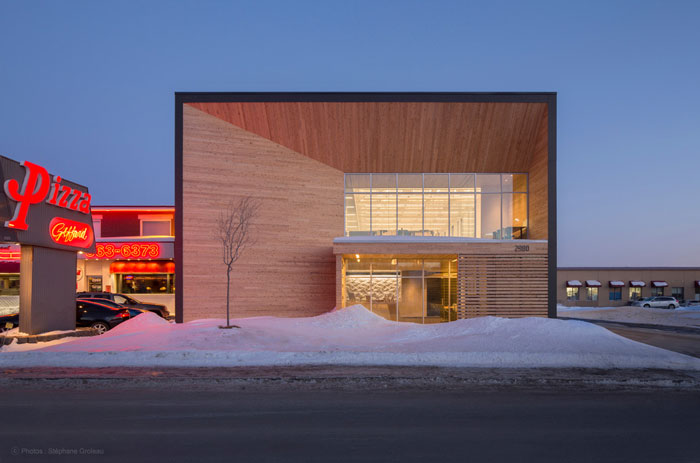
Image © Stephane Groleau
Read below the STGM’s description on how they integrated sustainability into the design!
STGM’s new head office is located in the Beauport borough of Quebec City, adjacent to the Estimauville eco-neighbourhood. It is a 1,000 square metre two-storied structure that puts the focus on eco-friendly, architectural innovation. The building succeeds in offering an exceptional level of comfort to its occupants through the mindful integration of a longitudinal form, orientation to the sun, light wood structure, meticulously selected materials and efficient systems, while producing a low ecological footprint.

Image © Stephane Groleau
High performance concrete siding combined with Eastern Cedar creates an impression that is both simple and dynamic, with attention given to the relationship between solids and voids that lend the building an air of elegance that belies both time and fashion. From the first sketches, the designers sought to attain a high level of sustainability – a principle already at the heart of the firm’s priorities, using creativity to implement the strategies necessary to reach LEED-NC Platinum level. With this objective in mind, comfort, simplicity and coherence were selected as founding principles.
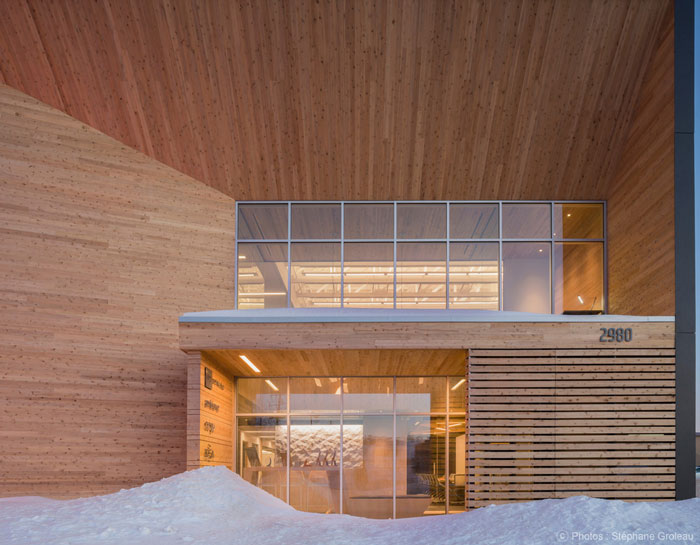
Image © Stephane Groleau
STGM’s new offices comprise two vast open-area workshops, closed offices, conference rooms, and indoor and outdoor meeting and rest areas. The longitudinal form, developed north-south, is sober and contemporary. The building integrates innovation and a host of eco-friendly features in view of attaining the highest level of sustainable building certification.

Image © Stephane Groleau
A number of features were included to reduce the consumption of drinking water. Through efficient water management, the building decreases the energy requirements of wastewater treatment plants. The strategies employed aimed to reduce the consumption of drinking water through the use of such water-saving accessories as low-flow faucets and shower heads, and rainwater to flush the toilets.
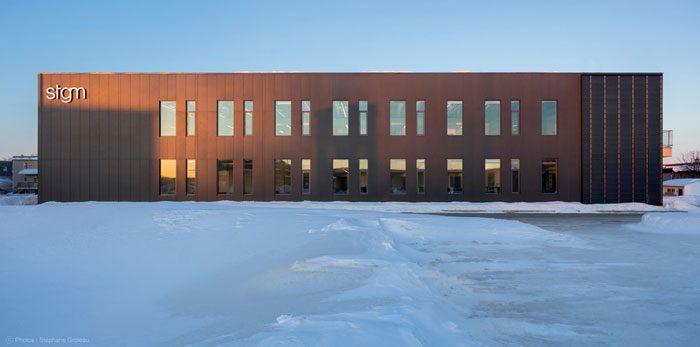
Image © Stephane Groleau
An ambitious reduction in energy consumption of over 60% compared with the reference building was sought through an innovative aerothermal design and recuperation of the building’s internal heat to curb demand on the distribution networks. A solar wall was also erected on the south-west façade of the building to preheat fresh air. Several control strategies also mitigated at-source needs by adapting lighting, heating and cooling use to actual occupation and needs.
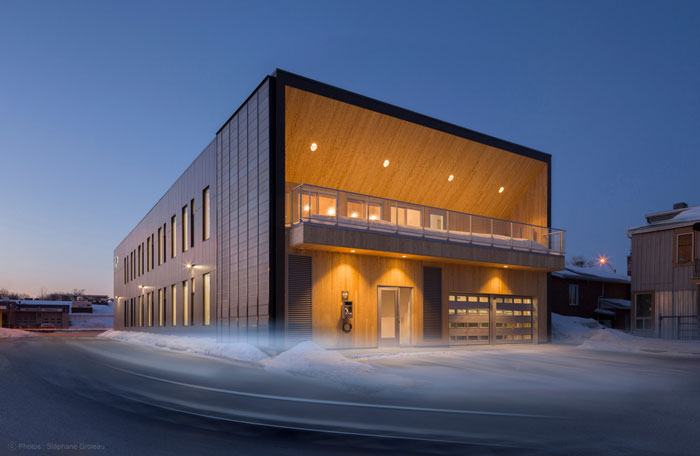
Image © Stephane Groleau
The project designers also focused on the use and management of materials and resources. The building’s ecological signature, for example, is apparent indoors with the use of wood salvaged from old houses in the area. Furniture from the company’s old offices was salvaged and integrated into the new project, without volatile organic compounds (VOCs) and regional provenance (local sourcing) were prioritized throughout the process.
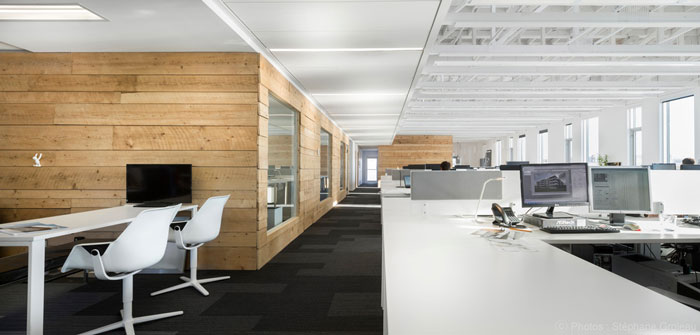
Image © Stephane Groleau
As early as the first sketches, the characteristics of the site itself dictated a minimalist approach to the structural concept. The limited bearing capacity of the ground required minimal structural weight, and so the lightweight ductile wood frame, with a low ecological footprint, proved to be the best solution. With a small percentage of engineered wood and a large portion of lumber, the structure consists of prefabricated small-sized trusses and joists enabling a lighter structure while allowing for wide spans (14 metres) between the posts to create an open work area. The wood roof trusses were integrated as a design element, exposed on the first storey, giving the building its distinctive look.
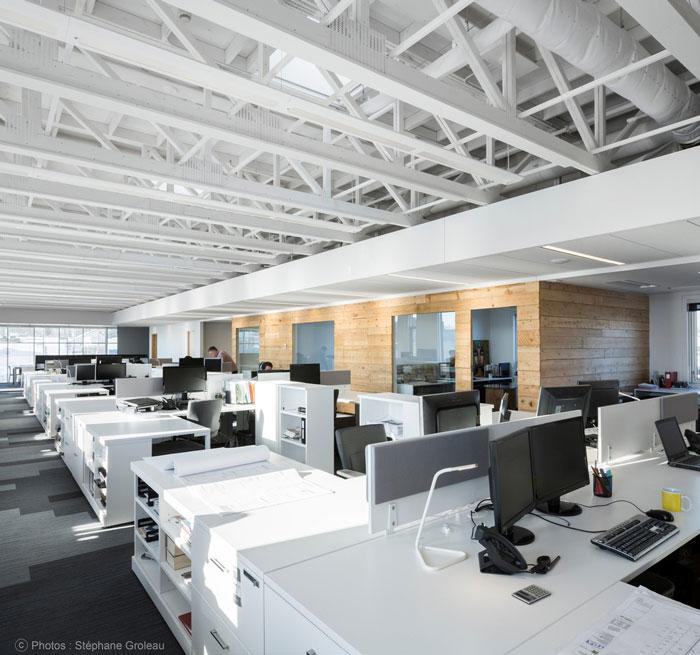
Image © Stephane Groleau
Positive impacts for users
The building’s location has its benefits for users. The dense sector is located on the outskirts of the downtown core, near a busy highway, with public transportation and a variety of services. Two parking lots are reserved for carpoolers and a charging station for electric cars is at the disposal of employees. The south facing terrace serves as a much appreciated rest area with landscaping featuring maintenance free and eatable plantings. Most of the plants are hardy and eatable, such as raspberry, lilies and serviceberry, don’t require irrigation and enable occupants as well as clients to use the outdoor areas of their environment.
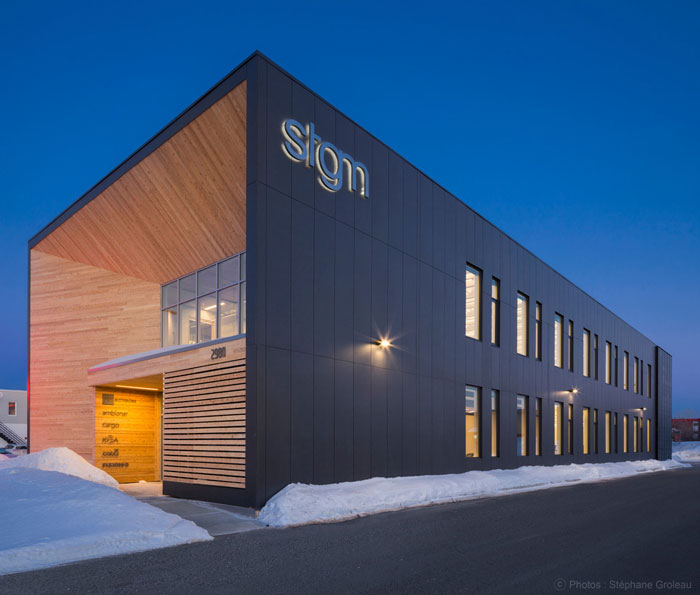
Image © Stephane Groleau
The building offers a stimulating work environment. Natural lighting and outdoor views are elements that are particularly appreciated. Most areas have natural lighting due to abundant windows on the four sides of the building, situated to optimize the different lighting opportunities during the day. Five light wells add midday lighting that is both appealing and varied depending on the time of day. LED fixtures, equipped with light detectors in the two large work areas, complete the indoor lighting needs.
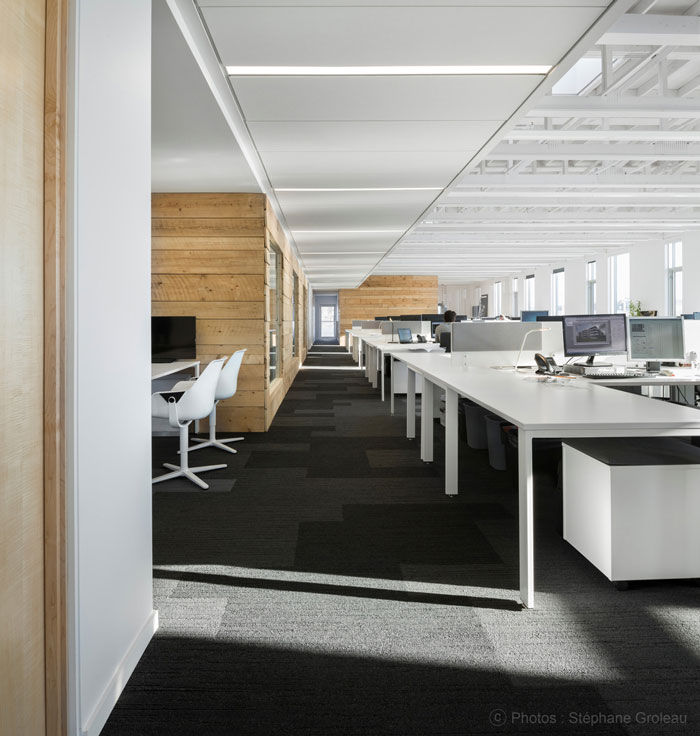
Image © Stephane Groleau
Key objectives, in keeping with the premises of comfort and simplicity, were to provide fresh air and to control the immediate environment. A series of windows vents are strategically positioned around the building envelope. In addition, the mechanical systems are designed to efficiently cool and heat the different zones of the building at the same time.

Image © Stephane Groleau
The project’s environmental performance in numbers:
- 110,000 litres of potable water saved each year
- 50% reduction in potable water consumption
- 96% construction waste diverted from landfill
- 86% space receiving natural light
- 94% space with outdoor views
- 60% less energy consumed compared with reference building
- 53% wood from sustainably managed forests
- 37% materials sourced locally
- 21% materials with recycled content
- 10% project materials salvaged
- 1% energy from sun
- 44% site area planted down
- 100% site area decontaminated prior to construction (gas station)
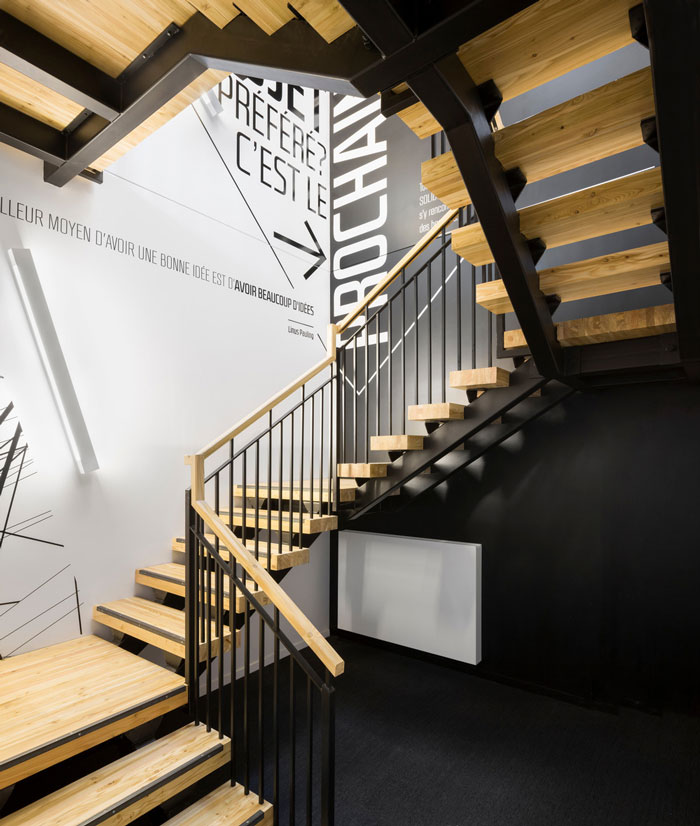
Image © Stephane Groleau
Sustainable measures
- Secure area for bikes and showers (2) for cyclists
- Porous parking spaces
- Reduced number (25) of parking spaces
- White roof membrane
- Rainwater management: 170 cubic metre underground reservoir for rainwater from roof; 25 cubic metre roof capacity; natural water infiltration bed for remaining rainwater
- Collected and treated rainwater (Éconeau system) used for toilets
- Landscaping with hardy plants, vegetables and fruit shrubs
- Water saving plumbing appliances: sinks, 5.7 L/min; double flush toilets, 3 and 6 L/flush; showers: 5.7 L/min
- Minimized weight and optimized capacity of light wood frame
- Small size wood frame (2×3, 2×4, 2×6…)
- Low emission VOC materials: Adhesives and sealants, paints and coatings, floor coverings, wood composites
- 90% of building area bathed in natural light
- Four lightwells (1.2 m X 1.2 m) on first floor
- Opening windows around building
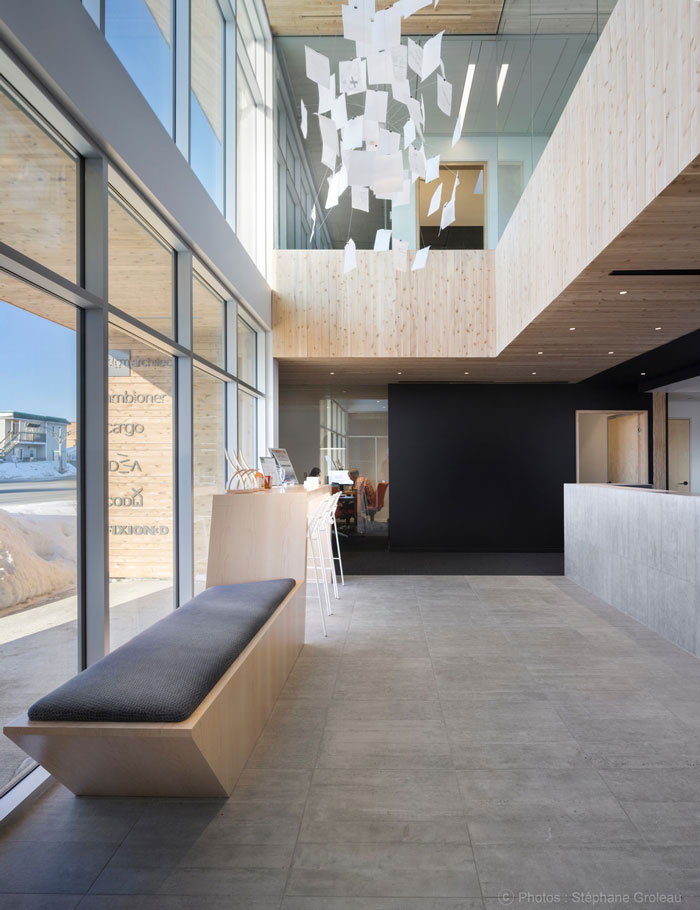
Image © Stephane Groleau
Eco-energy technologies
- Aerothermal system with variable cooling (R410a) heat pump with several decentralized evaporator modules and two-module condenser
- COP in heating mode between 2 and 5 (depending on exterior conditions)
- Solar captor (Lubi par Enerconcept), 42 sq. metres
- Average efficiency of heat recovery system of waste air (enthalpic core) 70%
- Efficiency of natural gas heater 85 kW, always in optimal operating mode, 97%
- Installed heating power 84 kW
- Installed cooling power 94 kW
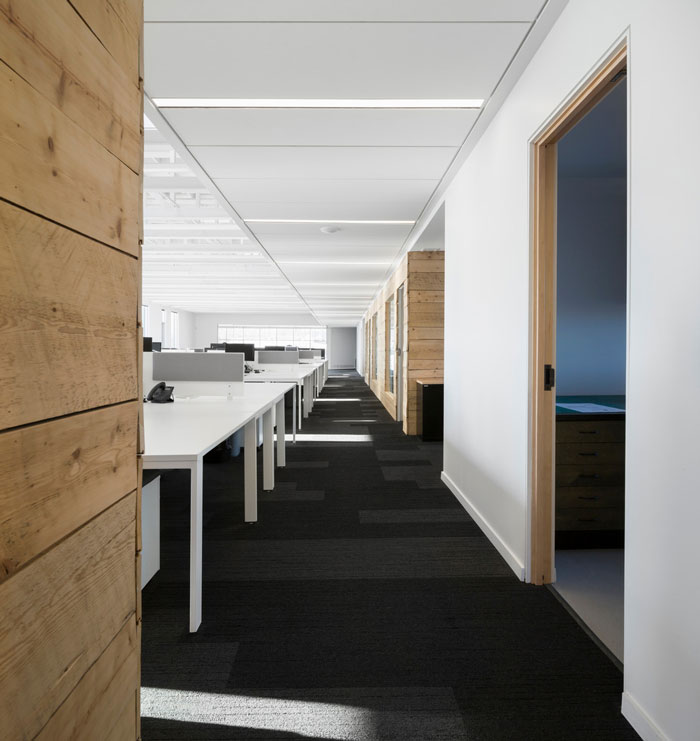
Image © Stephane Groleau
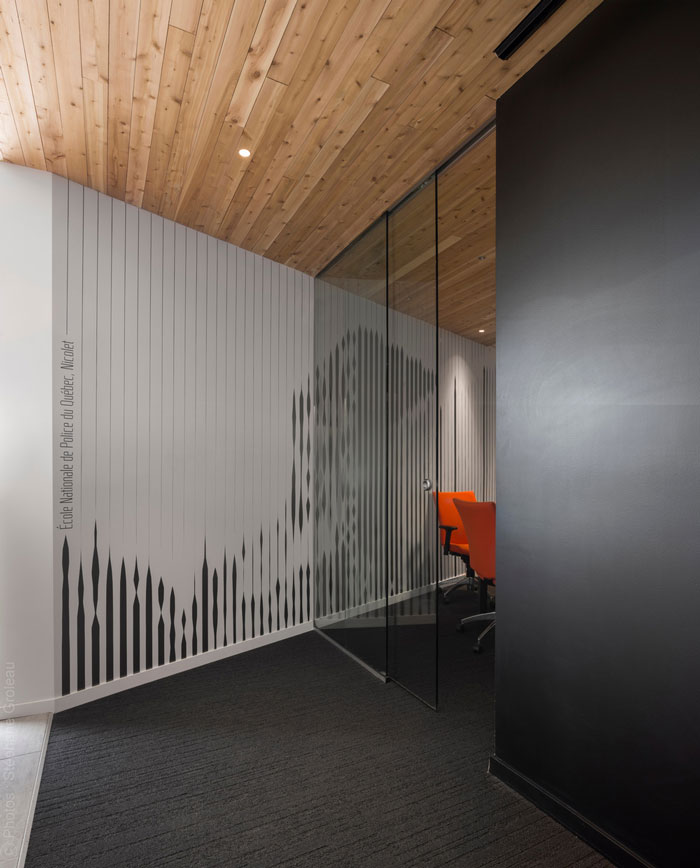
Image © Stephane Groleau
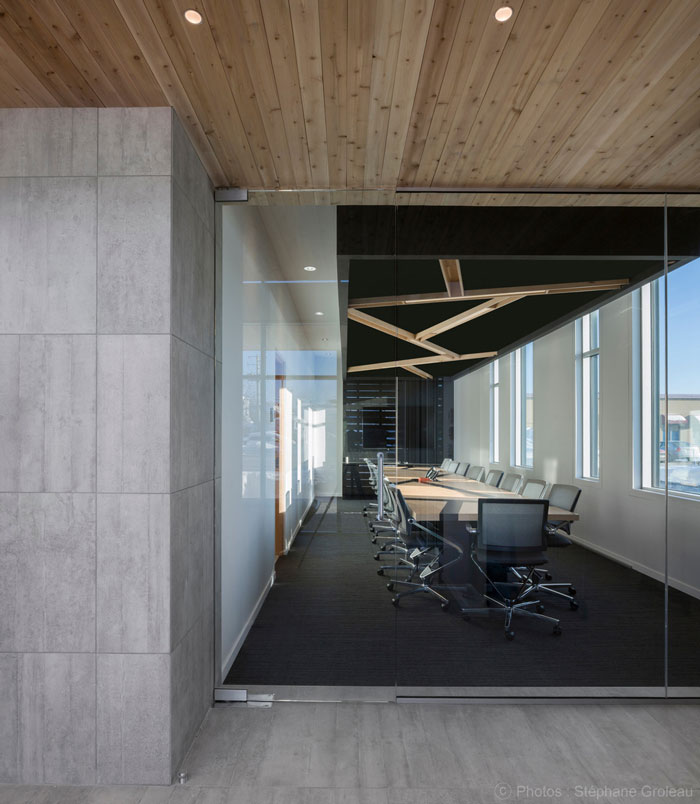
Image © Stephane Groleau
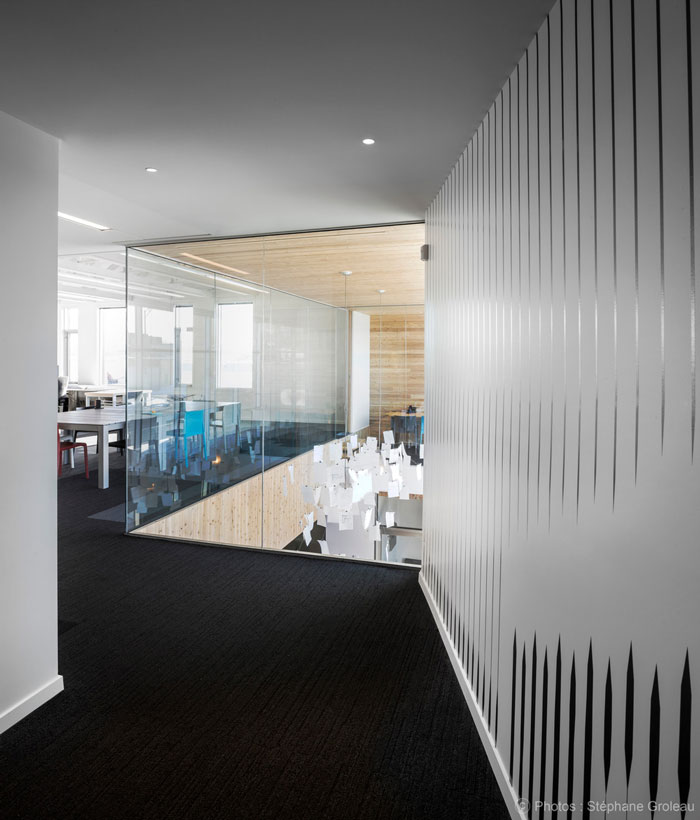
Image © Stephane Groleau
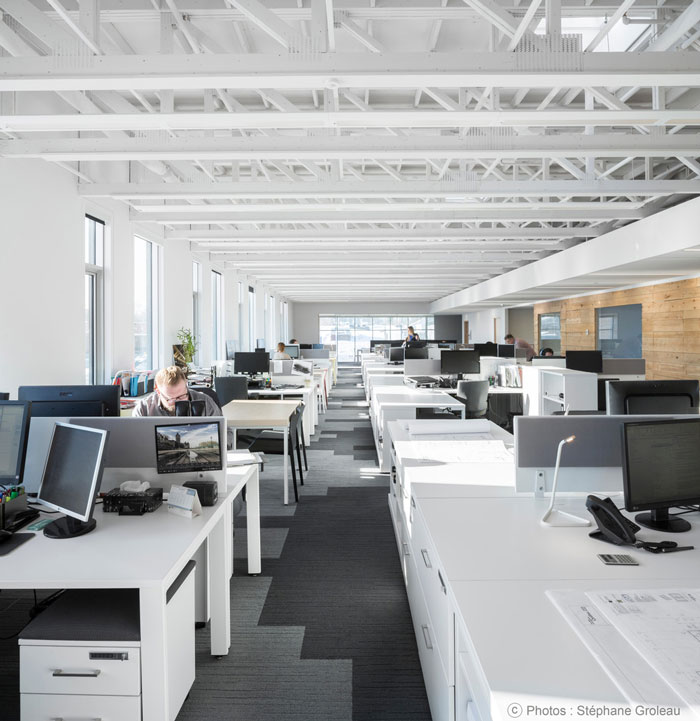
Image © Stephane Groleau
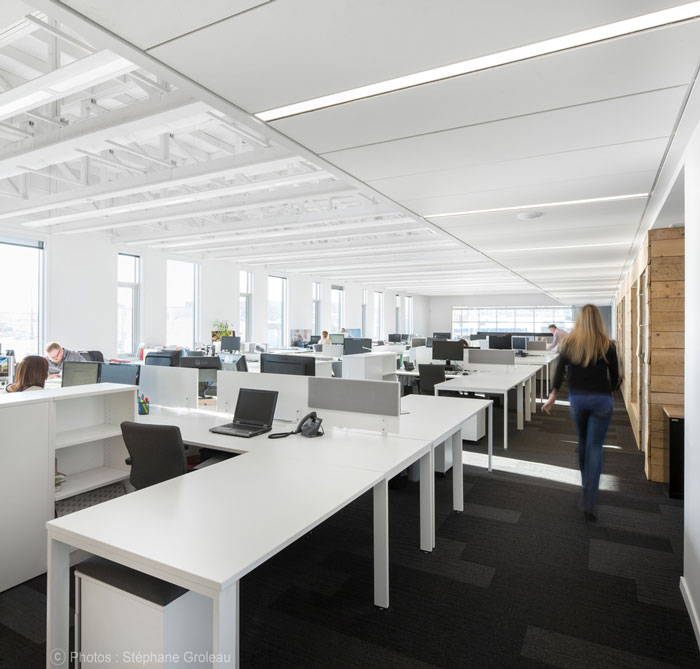
Image © Stephane Groleau
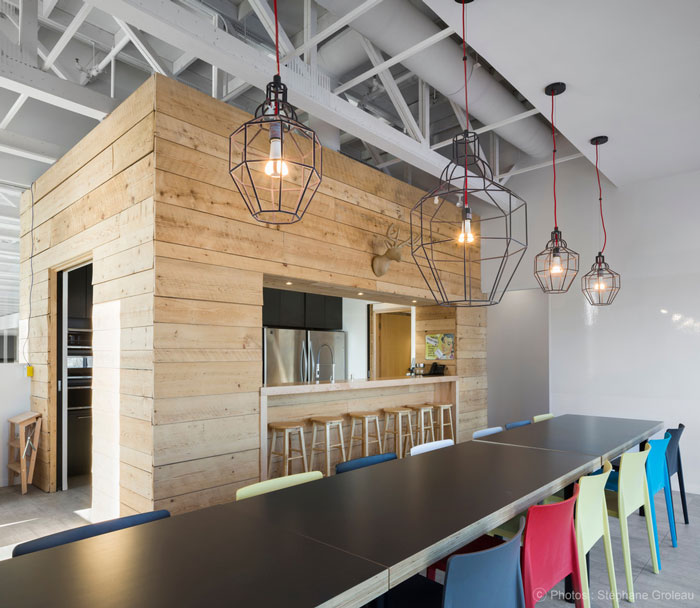
Image © Stephane Groleau
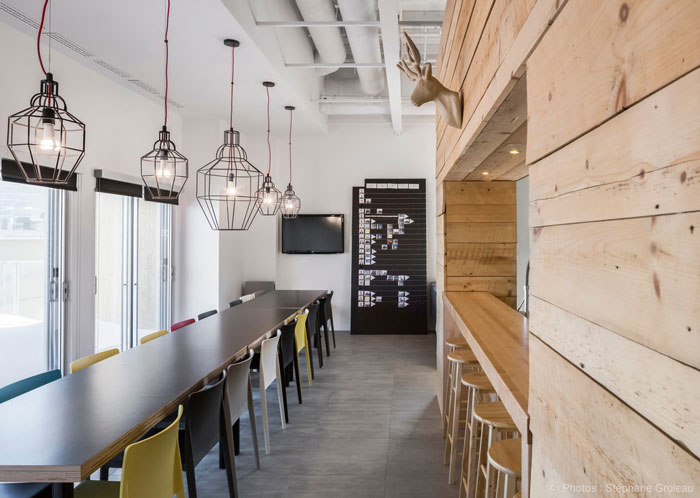
Image © Stephane Groleau
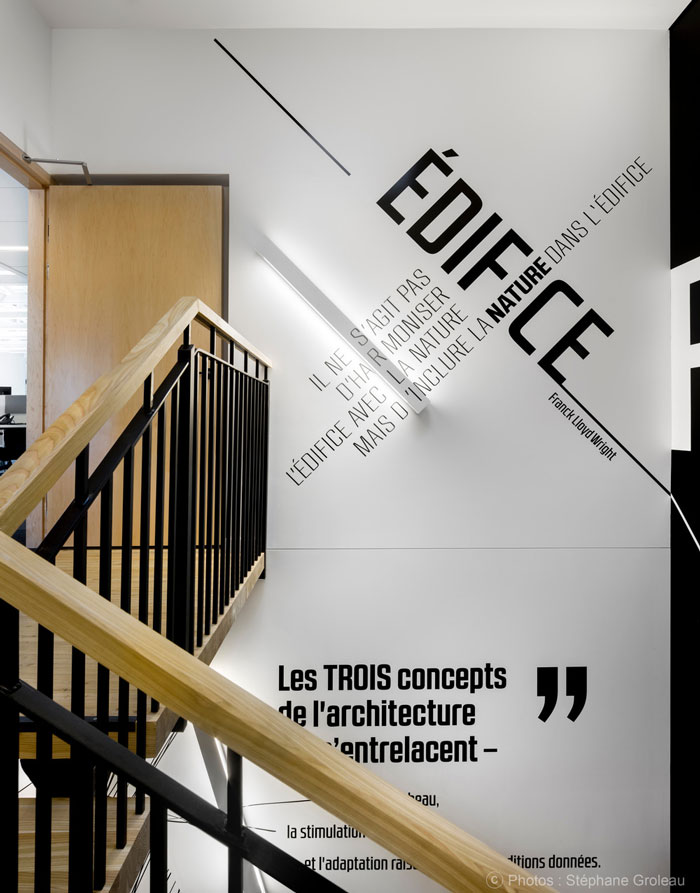
Image © Stephane Groleau

Image © Stephane Groleau
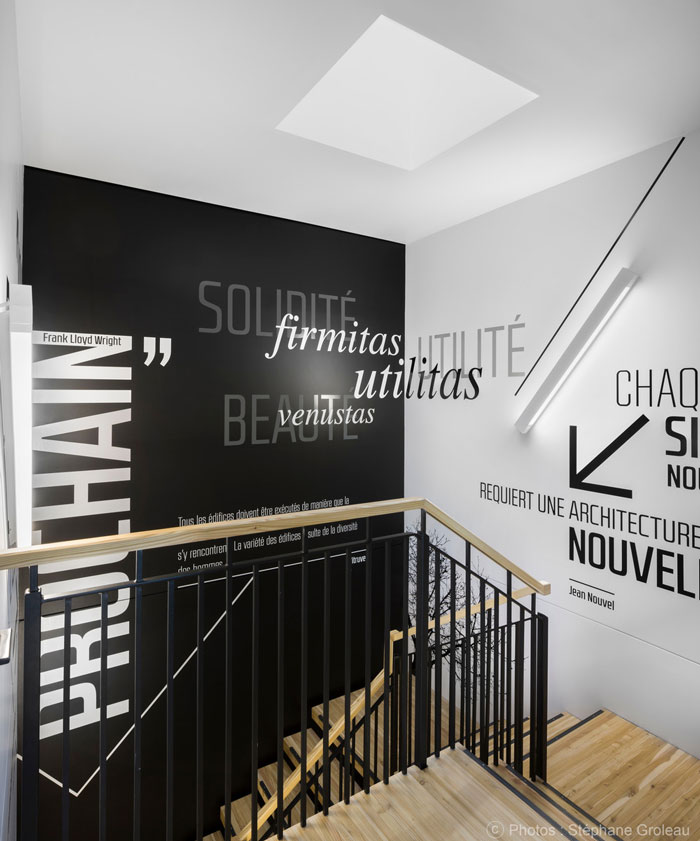
Image © Stephane Groleau
Photography: Stephane Groleau
*All images and information courtesy of v2com.
